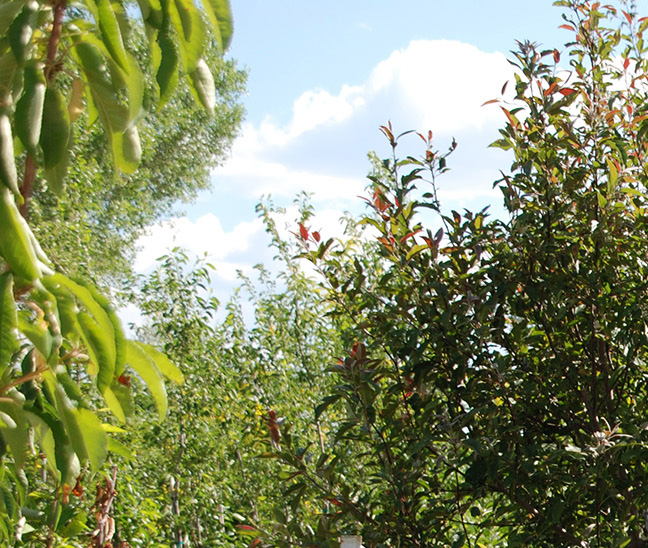Spring frost and fruit blossoms
Losing your fruit blossoms to a spring frost is a familiar frustration, and some of us have given in to the idea that the chance of saving them isn’t worth the effort of trying.
The easiest thing you can do to give them a better shot at withstanding a predicted frost is water the tree right before the frost is expected to hit.
It sounds counterintuitive, but it’s true.
When hit with a frost, your trees are better off watered than dry.
There are products designed to help shield fruit trees from freezing temperatures, such as ready-made wraps that trap warmer air inside with the tree.
You can also build your own freeze barrier using frost cloth or row cover.
Keep in mind, these methods can keep the temperature around your blossoms a few degrees warmer, but there is no intervention guaranteed to save them all.
With all that said, sometimes fruit trees lose their blossoms or don’t produce fruit for reasons unrelated to frost.
It could be a lack of pollinators.
Sometimes they rest; they take a year off.
Sometimes they bloom, sometimes not.
When it's hot and dry...
Increase the size of the wells around your trees so they get sufficient water during the hottest months of the year.
Make sure there’s a raised berm around the circumference of each tree well to keep water contained.
I recommend a layer of mulch inside the well for additional moisture retention, taking care to leave space between the tree bark and your mulch.
During the hot season, your trees should be getting watered at least once a week.
With these steps, you should start to see your trees putting on new growth.
You’ll be seeing more insects on and around your trees this time of year.
You can exterminate aphids and other soft-bodied bugs by spraying them with a liquid soap dilution, but avoid spraying with oils for a while so that your leaves don’t fry in the heat and the sun.
Prepare for pruning in February
The time to prune your trees is just before they’re coming out of dormancy, so by February you should be getting ready.
Start thinking about prevention. Clean up any old leaves and dropped fruit you didn’t get to in the fall.
This helps mitigate the emergence of diseases and codling moths, while also establishing a clean slate for the coming growing season.
Observe your trees. Do you have lower branches that are always in your way? Is there any therapeutic pruning to do?
Look for things like branches that are dead, broken, or crossing over and impeding one another.
Consider the trade-offs of pruning.
For example, strategic pruning of your fruit trees can open things up to the sun for a higher fruit yield, but this will also lead to fewer leaves.
Managing the size or shape of your trees is another goal you might have in pruning.
Do not top your trees. Topping a tree can shorten its lifespan, not to mention it provides open access for bugs and diseases.
Do not prune trees planted as recently as one year ago or less.
Prepare your pruning equipment.
Sharpen your pruners and loppers, and be sure to clean them thoroughly with alcohol or a 10% bleach solution to avoid transferring any diseases to your tree from dirty instruments.



